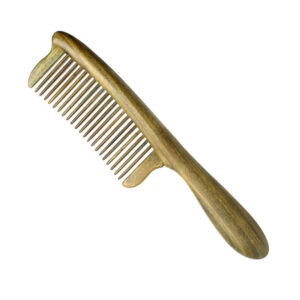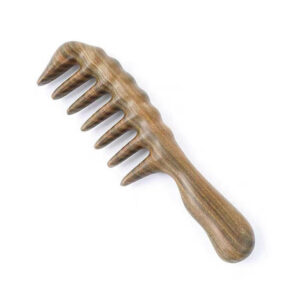Last updated on March 3rd, 2025 at 07:16 am


The phrase “hair horns” refers to a specific hairstyle that’s the appearance of horns, often created using hair extensions or styling techniques. This unique hairstyle has gained popularity in various circles, from fashion-forward individuals to certain cultural and artistic communities.
The symbolic meaning of hair horns
Horned hairstyles have held various symbolic meanings across different ancient civilizations. For instance, the horned hairstyle was often associated with divine figures and fertility in ancient Greece. The Egyptians also used horned hairstyles to represent power and status, particularly among royalty and high-ranking individuals. These styles were a means of aesthetic expression and a way to convey important cultural and religious symbolism.
The ancient symbolism associated with horned hair continues to resonate in modern times, albeit in new and adapted forms. Today, hair horn styles are often embraced as a means of self-expression and creativity. However, the influence of ancient beliefs and symbolism can still be seen in the way these styles are interpreted and used to convey personal identity and cultural affiliations. By exploring the historical context of hair horns, we can better appreciate its enduring legacy and its role in shaping contemporary hair trends.
Different cultures of hair horns
1. African cultural context
Horned hairstyles have a rich history in African culture, where they often serve as a symbol of beauty, status, and cultural identity. Traditional African hairstyles, such as cornrows, dreadlocks, and afro puffs, have incorporated various horn-like elements. These styles not only reflect the intricate braiding techniques of African hair artistry but also carry deep cultural significance. For instance, cornrows have been a traditional hairstyle among many African communities, symbolizing strength, resilience, and unity.
In contemporary African fashion, hair horn styles have evolved to include more modern and experimental designs. African designers and stylists often incorporate horned elements into their runway shows, showcasing the versatility and creativity of African hairstyles. This evolution demonstrates the blending of traditional practices with modern aesthetics, highlighting the dynamic and evolving nature of African hair culture.
2. European cultural context
Horned hairstyles have also found a place in European culture, where they have been influenced by various historical periods and folklore. In medieval and Renaissance Europe, horned hairstyles were sometimes associated with religious imagery and pagan symbolism. For example, the appearance of the devil or mythical creatures in medieval art often depicted them with horns, which were later mimicked in hairstyles.
European folklore and myth have also left a lasting impact on modern horned hairstyles. Characters from fairy tales, such as the devil, witches, and mythical creatures, often have horns, which have been reinterpreted in various hairstyles. These styles not only serve as a playful nod to European folklore but also represent the influence of these stories on contemporary fashion and beauty trends.
3. Asian cultural context
Horned hairstyles have also been a part of various Asian cultures, each with its unique interpretations and meanings. Traditional Asian hairstyles, such as the Chinese queue and the Japanese samurai hairstyle, have incorporated horn-like elements, symbolizing power, discipline, and status. These styles have been a reflection of the societal values and cultural practices of their respective regions.
In modern times, the adoption of hair horns in Asia has been influenced by globalization and the influx of diverse cultural influences. Asians have embraced a wide range of horned hair styles, incorporating elements from different cultures to create unique and innovative hairstyles. The growing popularity of hair horns in Asia demonstrates the blending of traditional and modern aesthetics, showcasing the region’s openness to new trends and its ability to reinterpret them uniquely and creatively.
Types and characteristics of hair horns
1. Unique and creative styling
- Horned hair styles often involve intricate designs and creative twists on traditional hairstyles.
- The use of hair extensions, clip-ins, or other hairpieces to create the appearance of horns.
- The ability to customize and personalize horned hairstyles to suit individual preferences.
2. Versatility and adaptability
- Hair horns can be adapted to various shapes, sizes, and hair types.
- The potential to incorporate different cultural and traditional elements into horned hair styles.
- The flexibility of horned hairstyles to be dressed up or down for different occasions.
3. Dramatic and eye-catching appearance
- Horned hair styles tend to make a bold statement and draw attention.
- The ability to create a sense of drama and visual impact with hair horns.
- The use of vibrant colors, textures, and lengths enhances the overall appearance.
4. Expressive and symbolic
- Horned hairstyles can serve as a form of self-expression and personal statement.
- The cultural and symbolic significance of hair horns in different societies.
- The use of hair horns to represent or honor specific cultural heritage or traditions.
Overall, horned hair styles are characterized by their uniqueness, creativity, and ability to make a statement. They offer individuals a way to express their individuality, cultural identity, and creativity. With the right care and maintenance, hair horns can be a versatile and eye-catching addition to any hairstyle.
How do I properly comb my hair horns?
- First and foremost, proper combing techniques are vital to maintaining the health and luster of keratin hair. For keratin hair, use a gentle shampoo and conditioner designed specifically for keratin hair. These products often contain softening and moisturizing ingredients that help protect the cuticle and reduce dryness and split ends.
- When combing keratin hair, use a wide-toothed comb to gently comb through, avoiding brushes or hard combs that can cause damage to the hair. Starting at the ends, gently comb through the hair in its natural flow, avoiding excessive pulling. If your hair is tangled, comb away a small section first and then gradually comb through the entire hair.
- Shampooing is an important step in maintaining keratin hair. Using warm water and a mild shampoo is key. When shampooing, gently massage the scalp, and don’t rub the hair excessively to avoid damaging the cuticle. When rinsing your hair, rinse out the shampoo thoroughly to avoid residue damage to your hair.
- For moisturizing and styling keratin hair, you can use hair care products specifically designed for keratin hair, such as hair oils, hair masks, and styling products. These products often contain moisturizing and conditioning ingredients such as squalane, hyaluronic acid, and argan oil, which help to maintain the hair’s moisture balance and add shine.
- Finally, for daily care of keratin hair, regular trims and regular use of keratin care products are also key. Regular trims keep hair healthy and beautiful, while the use of shampoos, conditioners, and keratin treatment products designed specifically for keratin hair protects the hair cuticle and reduces dryness and split ends.
With proper combing, washing, and daily care techniques, readers can better maintain and care for their keratin hair, resulting in healthy, lustrous, and beautiful hair.
How to take care of hair horns?
1. Keep your scalp healthy
- Regular shampooing: keeping your scalp clean is the key to maintaining a healthy scalp. Shampooing 2-3 times a week is recommended to remove oil, dirt, and dead skin cells.
- Use a shampoo suitable for keratinized hair: Choose a gentle, non-irritating shampoo to avoid damage to the scalp.
- Scalp massage: Regular scalp massage can promote blood circulation and increase the supply of nutrients to the scalp, which helps hair growth and scalp health.
- Avoid excessive styling: Excessive use of styling tools such as hot air, perm rods, and straighteners can cause damage to the scalp and it is recommended to reduce the frequency of use.
- Maintain good lifestyle habits: Getting enough sleep, eating a healthy diet, and exercising in moderation can help improve scalp health.
2. Prevent scalp problems such as folliculitis
- Keep your scalp clean: Regular shampooing to remove oil and dirt can help prevent folliculitis.
- Avoid over-combing: Excessive combing of keratinized hair, especially with hard brushes or sharp combs, may damage the scalp and increase the risk of folliculitis.
- Use non-irritating hair care products: Choose gentle hair care products that are suitable for keratinized hair and avoid products that contain harsh chemicals.
- Avoid styling products such as hairspray: Styling products such as hairspray may clog hair follicles and increase the risk of folliculitis. It is recommended to use light styling products suitable for keratinized hair.
- Pay attention to scalp hygiene: Avoid using other people’s combs, towels, and other personal items to reduce the risk of bacterial transmission.
With the above maintenance methods, readers can keep their scalp healthy and prevent scalp problems such as folliculitis. Also, maintaining good habits and proper scalp care can help improve overall scalp health.
Conclusion
The article on “hair horns” has explored the development, cultural significance, and personal expression associated with this unique hairstyle. From the evolution of symbolism to its popularity in modern society, angular hair is not only a fashion trend but also a way of personality expression and cultural identity.
We have seen how horned hair styles have evolved, with various ancient civilizations imbuing them with deep symbolic meanings. Fast forward to the present day, and horned hair has transitioned from a niche trend to a mainstream fashion statement. The reasons for its popularity are multifaceted, ranging from the desire for self-expression and creativity to the influence of social media and celebrity endorsements.
Horned hair serves as a canvas for individuals to showcase their unique personalities and cultural affiliations. It has become a powerful medium for self-expression, allowing people to break free from societal norms and embrace their true selves. Moreover, the styling and care tips discussed highlight the importance of maintaining a healthy scalp and preventing potential issues, ensuring that individuals can rock their horned hair with confidence and ease.
Love Tips
Have trouble with static electricity when creating hair corners? Not good at taking care of it? Quickly try sandalwood comb, anti-static ditto, and comes with a massage function!
Not enough? Want to know more?
- How to gua sha science?
- Does scalp massage help hair growth?
- How can I comb my hair to prevent hair loss?


